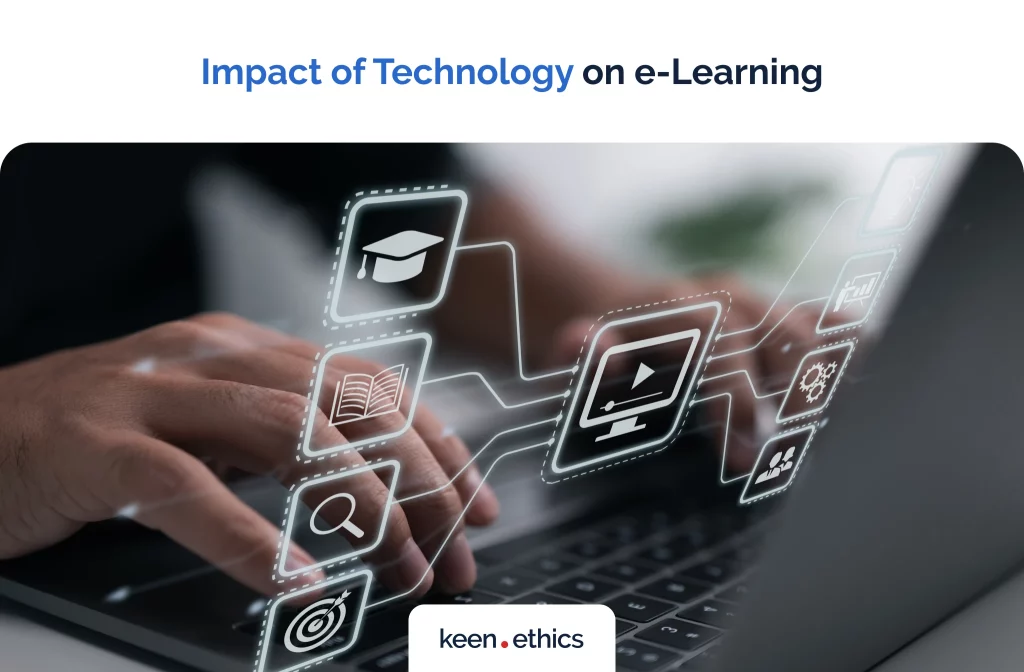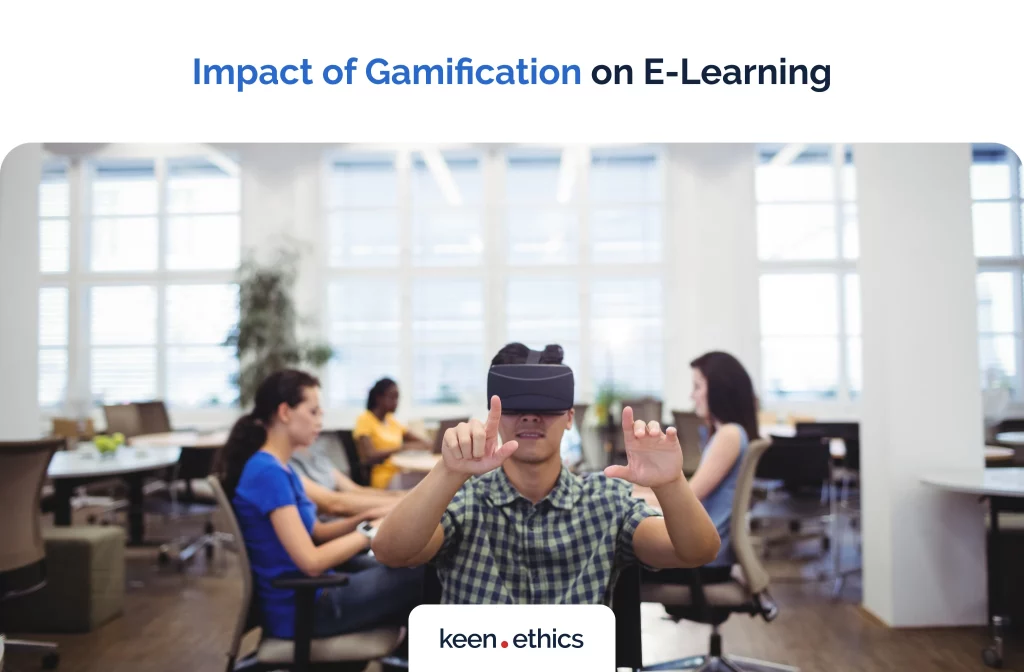Discovering e-Learning and having a look at the latest e-Learning trends in 2024

Introduction
Do you know that an increasing number of celebrities strive to invest in e-Learning apps? Shaquille O’Neal, the NBA superstar has recently discussed his passion for investing in e-Learning and unlocking a brighter future for children. Why is it becoming such a trend? Let’s discuss it now.
Definition of e-Learning
The e-Learning industry is constantly evolving, and its power can’t be questioned. That’s why it’s important for businesses to keep up with the current trends in e-Learning. From the use of Artificial Intelligence to the integration of VR and AR, these trends will shape the way e-Learning is designed and delivered.
So, what is the essence of an e-Learning? E-Learning allows learners to access educational materials and participate in learning activities remotely, often at their own pace and convenience. This approach to learning has become increasingly popular in formal education, professional training, and personal development, offering flexibility and accessibility to a diverse range of learners worldwide.
Overview of e-Learning Industry Trends For 2024
Almost two years ago, discussions among software development specialists centered heavily on machine learning and the Internet of Things. Presently, we can observe a new wave of innovative trends in educational technology. These trends actively boost student-centered learning, connectivity, collaboration, and versatility. So, what exactly are these trends? Let’s unravel the mystery.
Gamification, big data, e-Learning, VR/AR, and AI stand out among these trends. The question then arises: how can one implement these cutting-edge trends in educational technology in their unique context?
Impact of Technology on e-Learning

Role of Artificial Intelligence
Imagine being accompanied by a knowledgeable companion who understands your unique learning style and can adjust lessons just for you. That’s what Artificial Intelligence (AI) does in e-Learning. If you encounter some parts tricky, no worries – AI will be able to help, so that they don’t hinder your progress. Essentially, it’s like having a tutor present all the time, making the learning process easier and more enjoyable.
Role of Virtual Reality
VR technology is a good example of technological advancement in learning too. Virtual reality is like putting on magic glasses that make lessons way more interesting. Using simulations to learn promotes improved retention of educational content.
Role of Augmented Reality
Augmented reality in e-Learning can change the way in which learners apprehend learning material. Instead of reading about things, you can see them right there, floating in the air. This can make learning fun and interactive, just like a game.
Impact of Social Media on e-Learning

Now, what about social media and its impact on e-Learning? Picture this: sharing ideas, asking questions, and teaming up on projects, all in one digital space.
Use of Social Networks
One such way is the use of social networks. For instance, instructors can employ them to live stream lectures, making learning more accessible and reaching a broader audience. Blogs also can serve as another way for integrating social media into the classroom. Social networks enable the sharing of diverse ideas, information, career interests, and various forms of expression within distinct communities or a global network. It can make your online education not only informative but also social and engaging.
Use of Video Conferencing
Video conferencing has transformed the landscape of e-Learning as well. This technology brings a personal touch to online education, allowing for face-to-face interactions, real-time discussions, and instant feedback. Video conferencing in e-Learning bridges the gap between distance and connection, transforming the virtual learning experience into a dynamic and collaborative journey.
Use of Discussion Boards
Discussion boards, in turn, transform virtual classrooms into vibrant spaces for collaboration and knowledge sharing. These discussion boards provide a platform for asynchronous communication, allowing participants to engage at their own pace. Students can ask questions, share insights, and explore different perspectives, fostering a sense of community in the virtual learning environment. Discussion boards facilitate continuous dialogue, enabling learners to connect with their peers and instructors, and enhancing the overall depth and richness of the e-learning experience.
Impact of Mobile Devices on e-Learning

In the ever-evolving world of technology and education, mobile devices have taken center stage in e-Learning. This isn’t just a shift; it’s a full-blown revolution! With the use of mobile devices you can carry an entire classroom in your pocket, where learning is as easy as a swipe, tap, and click.
Use of Smartphones
With smartphones in the e-Learning arena, education becomes agile, flexible, and tailored to fit your on-the-go lifestyle. Using smartphones in e-learning offers a myriad of benefits, particularly: accessibility, flexibility, interactivity, collaboration, personalization, efficiency, cost-effectiveness, continuous learning, and environmental Impact.
Use of Tablets
With their portable and interactive nature, tablets boost the learning experience no less than smartphones. In fact, they allow learners to engage with dynamic content and interactive applications. Tablets empower learners to take their education wherever they go. In the world of e-Learning, tablets are catalysts for a more interactive, flexible, and engaging educational journey.
Use of Wearables
Gear up for the future of learning with the exciting integration of wearables in e-Learning! Wearables create interactive lessons right on your wrist, where you can seamlessly access course content, receive notifications, and even engage in quick quizzes — all with a flick of your wrist. From fitness trackers to smart glasses, these stylish gadgets are turning classrooms into a space-age adventure.
Impact of Gamification on E-Learning

By incorporating game elements, such as challenges, rewards, and competition, into the learning process, gamification captivates learners, making the acquisition of knowledge feel more like an exciting quest than a traditional lesson. But how exactly? Let’s find out.
Use of Leaderboards
The main idea behind using leaderboards is to openly showcase students’ achievements, displaying the current ranking of each group member, which can inspire participants to strive for excellence.
Use of Rewards
Rewards, in turn, serve as powerful incentives, encouraging learners to actively engage with course content and strive for excellence. Whether it’s a virtual badge for mastering a challenging topic or a certificate for course completion, rewards create a tangible sense of achievement. Rewards can transform academic pursuits into a personalized and gratifying journey of continuous growth and success.
Use of Challenges
Incorporating challenges into e-Learning helps redefine the e-Learning world. Challenges are not just obstacles; in fact, they also serve as stepping stones toward a more enriched and effective educational experience. This approach is characterized by engagement boost, motivation enhancement, and critical thinking.
Challenges of E-Learning
Ongoing advancements in e-Learning gradually boost the learning experience. Although e-learning offers numerous advantages, it also presents certain challenges that educators and learners may encounter:
Security and Privacy Issues
E-Learning platforms often store personal information, including student and instructor data. Data breaches can expose this sensitive information, leading to identity theft, financial fraud, or other malicious activities.
Lack of Interaction
E-Learning often lacks the face-to-face interaction found in traditional classrooms. This absence of physical presence can impact social aspects of learning.
Technical Difficulties
Technical glitches, such as software malfunctions or internet disruptions, can disrupt the flow of e-Learning sessions. These issues may hinder the learning experience and cause frustration for both educators and learners.
Lack of Motivation
E-Learning requires a high level of self-motivation and discipline. Without a set schedule and direct supervision, some learners may struggle to stay on track and complete assignments in a timely manner.
Conclusion
When we talk about the e-Learning of 2024, we can see that the upcoming trends are set to redefine education process in dynamic and innovative ways. The integration of emerging technologies like artificial intelligence, virtual reality, and augmented reality promises to elevate engagement and provide immersive educational journeys. The fusion of gamification, mobile devices, and social media is creating an ecosystem that not only caters to diverse learning styles but also allows for data-driven insights to enhance educational outcomes. The year 2024 holds the promise of a new phase in e-Learning, aiming not just to address the challenges of the modern world but also to continue to transform the education process.
Our company offers help with such applications. Address us, and we’ll provide high-quality assistance!












